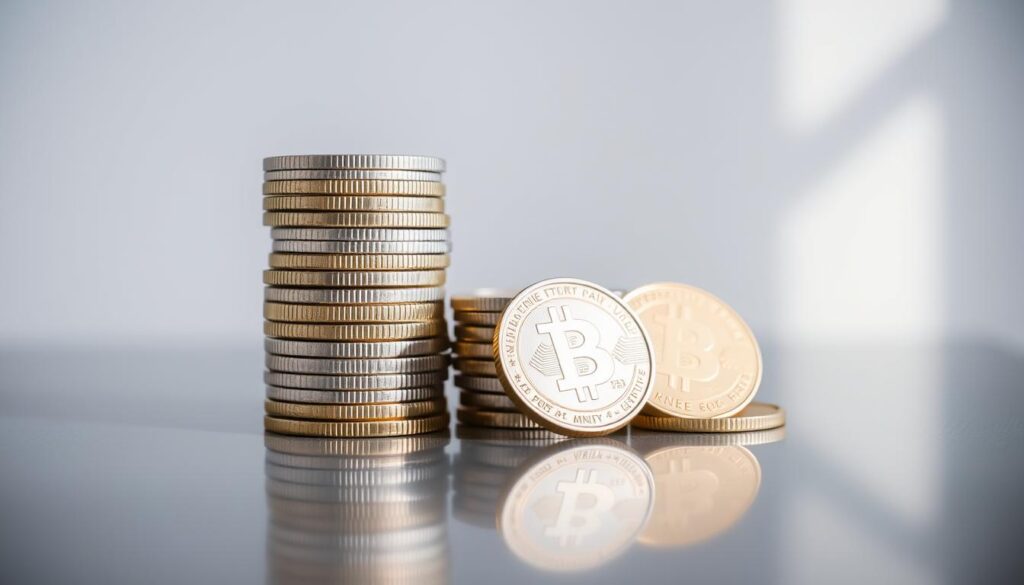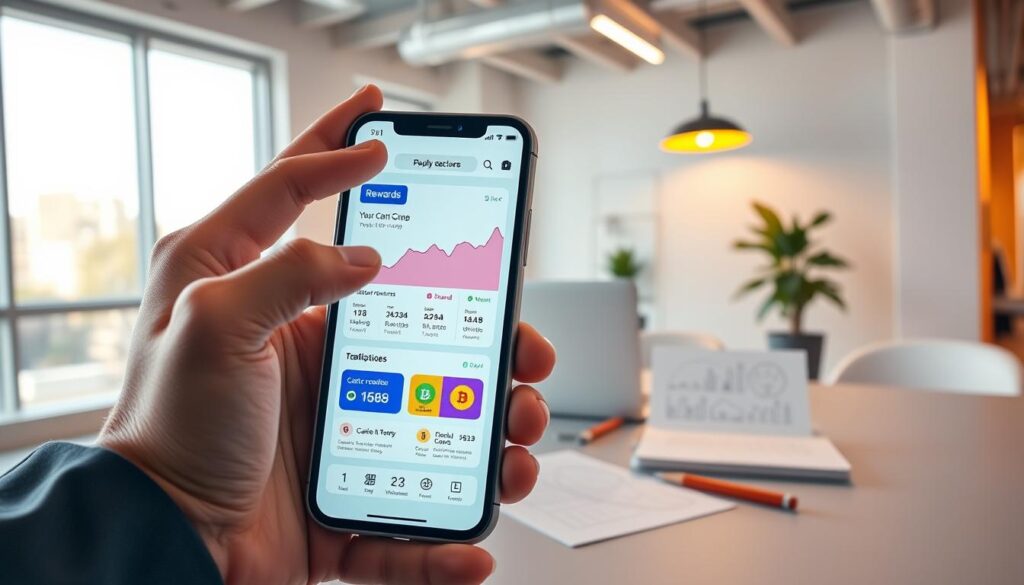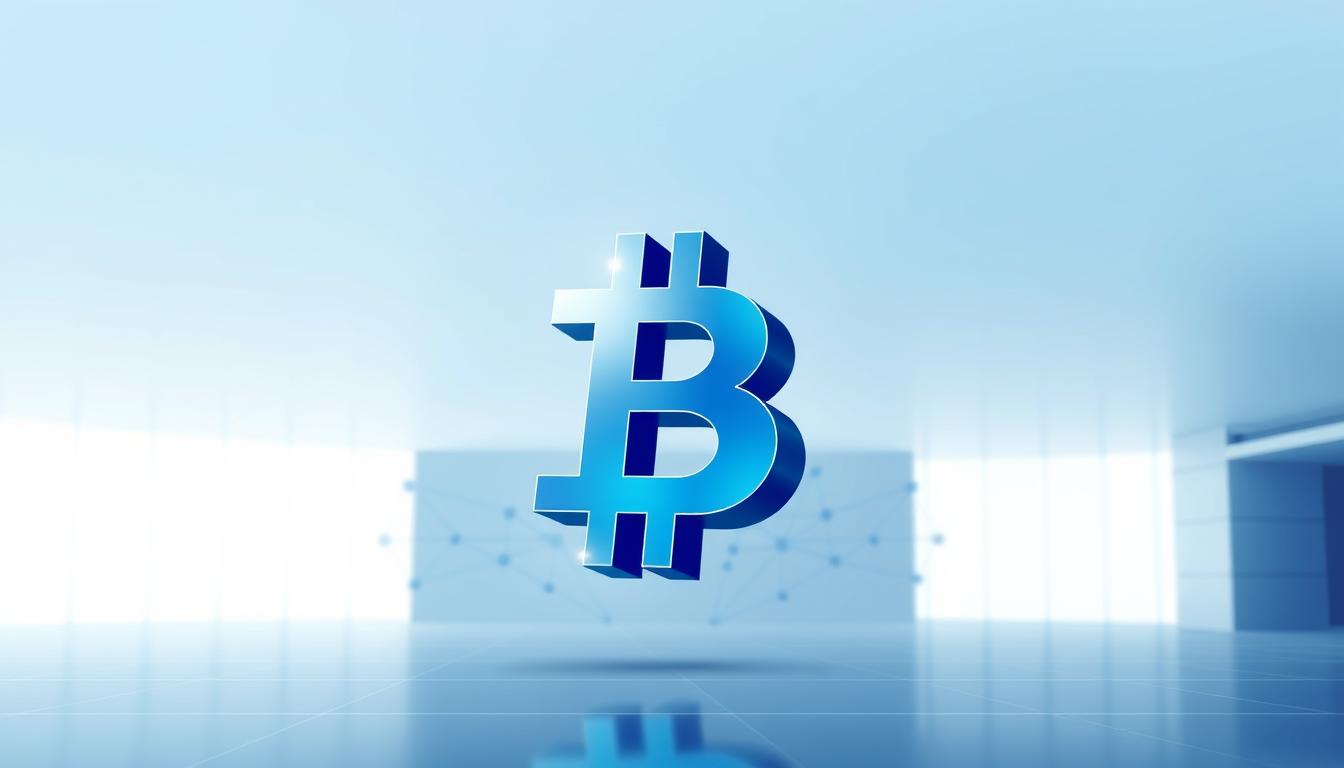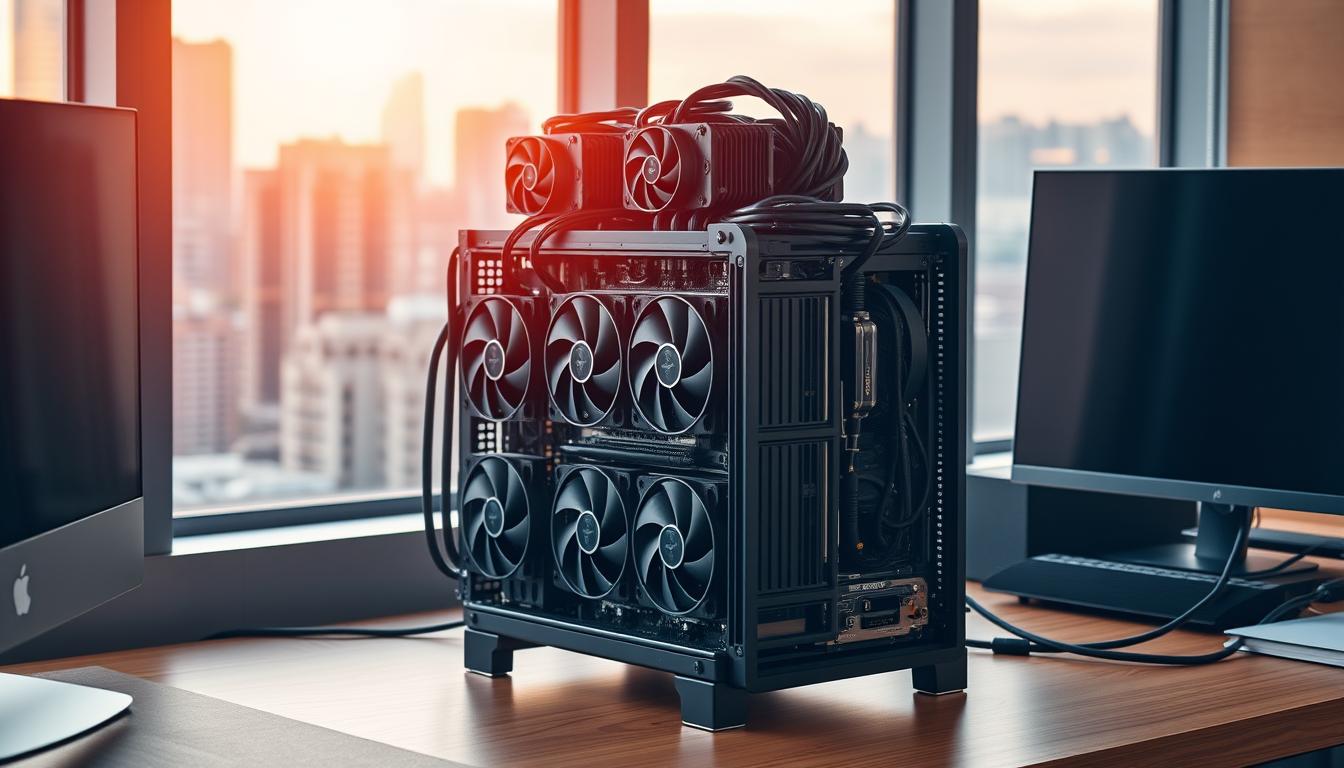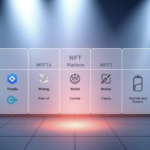Now Reading: Top Crypto Exchanges for U.S. Traders
- 01
Top Crypto Exchanges for U.S. Traders
Top Crypto Exchanges for U.S. Traders

Choosing the right crypto exchange is key for U.S. investors. The best exchanges must follow strict rules and offer reliable services. They must also comply with laws like anti-money laundering rules to keep users safe and legitimate.
Top exchanges focus on security, user experience, and access to digital assets. This guide helps traders find platforms that are both innovative and follow U.S. rules. It helps avoid risks and make smart choices.
Key Takeaways
- Regulatory compliance is a top priority for top crypto exchanges for U.S. traders.
- Security features and supported cryptocurrencies vary across leading exchanges for U.S. traders.
- Fees and trading tools differ, requiring users to compare options carefully.
- U.S. regulations shape which platforms are available and how they operate.
- This guide simplifies finding exchanges aligned with individual trading goals.
Understanding the Cryptocurrency Exchange Landscape in America
Cryptocurrency exchanges are online places where people trade digital coins. In the U.S., these sites must follow both federal and state laws. This makes the U.S. market special for investors. The best cryptocurrency trading platforms offer safety, ease of use, and follow the law.
How Exchanges Function in the Digital Asset Ecosystem
Exchanges connect buyers and sellers. They show prices live and make trades happen. Users can keep their coins on the site (hot wallets) or move them to safer places (cold wallets).
Centralized vs. Decentralized Exchange Options
Centralized exchanges (CEXs) like Coinbase and Binance.US handle your money and check who you are. Decentralized exchanges (DEXs) use smart contracts on blockchain, so no one controls your coins. The main differences are:
- Centralized exchanges: They are easy to use but you need to show who you are.
- Decentralized exchanges: They let you trade directly with others without anyone in the middle. But, you need to know a lot about tech.
The Evolution of Crypto Trading Platforms in the U.S.
At first, there were problems with scams and hacks. Now, because of new rules, the top US crypto exchanges are safer. They also offer new things like staking and margin trading. But, U.S. exchanges can’t always offer all the coins you want because of the law. This affects how traders get digital assets.
U.S. Regulatory Framework for Cryptocurrency Exchanges
Crypto traders in the U.S. face a complex regulatory landscape. Top-rated crypto exchanges follow rules from the SEC, CFTC, and FinCEN. These agencies enforce anti-money laundering (AML) rules, tax reporting, and securities compliance.
The SEC checks if digital assets are securities. The CFTC oversees crypto trading based on commodities. These rules are crucial for exchanges to operate legally.
- FinCEN demands exchanges report big transactions and check user identities (KYC).
- New York’s BitLicense has strict rules, affecting Gemini and Kraken.
- Other states have different rules, making it hard for exchanges to follow.
Regulations shape which exchanges serve U.S. users. For instance, Binance.US works differently from its global version. SEC actions have made some platforms stop trading certain tokens.
Before joining an exchange, check if it follows the rules. This ensures the exchange offers safe and legal services.
Future laws might make rules clearer but could also slow down innovation. It’s important for traders to stay updated. This way, they can pick exchanges that are secure, easy to use, and follow the law.
Essential Features to Look for in Top Crypto Exchanges for U.S. Traders
Choosing the right platform means looking at key features that keep assets safe and make trading easy. When picking top crypto exchanges for U.S. traders, focus on those with top-notch security and easy access. Here’s what makes the best cryptocurrency trading platforms in the U.S.:
Security is First: Top exchanges keep funds safe with cold storage, two-factor authentication, and insured wallets. Make sure the platform follows U.S. rules like SEC and FinCEN.
- Cold storage for 98%+ of user assets
- Withdrawal hold periods to prevent fraud
- 24/7 fraud monitoring systems
Asset Variety: U.S. platforms might limit some tokens due to rules. Check if they have major coins (BTC, ETH, SOL) and unique altcoins for your strategy.
Fee Clarity: Look at trading fees, deposit/withdrawal costs, and any hidden fees. Sites like Gemini and Coinbase Pro show fee levels based on how much you trade.
User Experience: A simple design helps avoid mistakes. Choose exchanges with mobile apps, tutorials, and support in many languages for better access.
Support Quality: Good exchanges offer live chat, email, and phone help during tough times. Quick responses under 15 minutes show they care about their customers.
These standards help you compare platforms in the next sections. They ensure you pick an exchange that fits your risk level and investment goals.
Coinbase: America’s Most Recognized Crypto Trading Platform
Coinbase is a key player among leading exchanges for U.S. traders. It welcomes new users and supports long-term investors. Starting with Bitcoin, it now lists over 150 cryptocurrencies, offers staking, and advanced tools through Coinbase Pro.
Its focus on rules and easy-to-use design makes it a favorite in the top US crypto exchanges field.
Pros and Cons for Different Types of Traders
Beginners like Coinbase for its simple design and learning resources. But, seasoned traders might find it too basic compared to Pro’s features. Institutional investors, however, value its secure wallet services and SEC approval.
Fee Structure Analysis
- Standard users face $0.50–$5 per withdrawal, plus trading fees that vary.
- Coinbase Pro charges 0.10–0.50% fees, matching Binance.US and Gemini for active traders.
- Big traders get fee cuts, but non-Pro users pay more.
Security Features and Insurance Protection
Coinbase keeps 98% of assets in cold storage and has $255 million in cyber insurance. Being a public company means it must do SEC audits, adding to its trustworthiness. Users can protect their accounts with two-factor authentication and biometric login.
Gemini: Security-Focused Exchange for U.S. Investors
Gemini is a top choice among top-rated crypto exchanges for its focus on security and following the law. It was started by the Winklevoss twins and has a New York BitLicense. This means it meets very strict financial rules.
It also has SOC 2 Type 2 certification and up to $2.5 billion in digital asset insurance. This protects users from possible dangers.
Gemini is great for U.S. investors because it has features like Gemini Earn for earning interest on crypto. It also has Gemini Pay for spending digital assets at stores. Even though it doesn’t offer as many cryptocurrencies as some top exchanges for trading cryptocurrencies in the United States, it’s safer because of fewer options.
- Multi-factor authentication for all accounts
- Offline cold storage for 98% of assets
- 24/7 security monitoring systems
Gemini’s fees are fair, with no extra costs for putting money in or taking it out. It has live chat and email support for all users. Gemini is known for being safe and easy to use, even in a changing market.
Kraken: Advanced Trading Features for Experienced Users
Kraken is a top choice for traders who want precision and control. It’s a leading exchange for U.S. traders, offering tools for complex strategies. Its interface is designed for functionality, perfect for those beyond basic trading.

Trading Tools for Precision
Kraken offers advanced order types like stop-loss, take-profit, and trailing stops. These tools help automate entry and exit points, reducing the need for constant monitoring. Users can also set limit orders with specific time frames to trade at exact market conditions.
Margin Trading for Leveraged Gains
U.S. traders can use margin trading with up to 5x leverage after a simple verification. This feature requires approval, ensuring it meets regulatory standards. It allows for bigger returns on market movements.
Staking and Yield Opportunities
Users can earn passive income through staking on Kraken. Options like Cardano (ADA) and Solana (SOL) offer competitive annual percentage yields (APY). Staking periods vary, with some assets needing a 365-day lockup. Compare these rates to other exchanges to get the best returns.
Kraken’s fees decrease as trading volumes rise, rewarding active traders. Its fee schedule is transparent, with maker-taker rates that benefit large or frequent traders. Although its interface may not be simple for beginners, its strong tools and SOC 2 compliance assure security and reliability for experienced users.
Binance.US: Navigating the American Version of a Global Exchange
Binance.US is a part of the global Binance family but follows U.S. rules. It’s a top choice for U.S. traders who want to use well-known tools safely. This platform makes sure users have a secure and easy-to-use place to trade.
Key Differences Between Binance and Binance.US
- Liquidity: Separate pools from the global platform.
- Asset selection: Limited to 50+ cryptocurrencies versus Binance’s 100+ options.
- Features: No margin trading, staking, or tokenized stocks.
- Regulatory compliance: Adheres to OFAC sanctions and anti-money laundering rules.
Trading Pairs and Limitations
Binance.US has basic pairs like BTC/USD and ETH/USD. But, it doesn’t have popular stablecoin pairs like USDT/BTC. It also doesn’t offer privacy coins or some altcoins banned in the U.S. The fees start at 0.1% for taker trades, which is competitive.
Security is a big deal here, with 98% of assets in cold storage and two-factor authentication. Users must verify their identity and confirm where they live. Binance.US is great for those who want a fast, easy-to-use platform that meets U.S. rules.
FTX.US: Innovative Trading Products for American Investors
FTX.US is a top choice among top-rated crypto exchanges for U.S. investors. It’s part of the FTX group and offers unique products. These include tokenized stocks, prediction markets, and NFT tools, not found on many top exchanges for trading cryptocurrencies in the United States.
- Tokenized stocks let users invest in equities via crypto, bypassing traditional brokerage accounts.
- Prediction markets allow betting on real-world events, from sports to political outcomes.
- NFT platforms enable buying, selling, and creating digital collectibles.
FTX.US has competitive fees, with discounts for holding FTT tokens. Its crypto selection is smaller than some rivals, but its innovation attracts users. It uses cold storage and two-factor authentication for security, meeting U.S. standards.
It also supports fiat deposits and withdrawals through banking integrations. This makes managing funds easier.
Retail traders get advanced tools, but beginners might find it complex. Customer support is available 24/7, helping quickly. FTX.US combines innovation with compliance, making a unique spot in the U.S. market.
How to Compare Trading Fees Across Different Exchanges
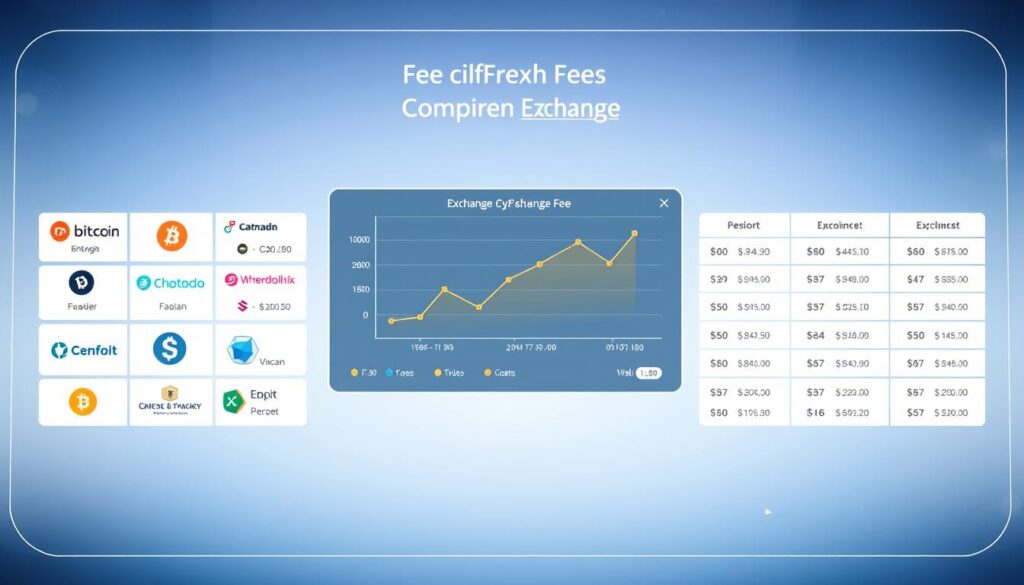
Choosing the best cryptocurrency trading platforms is more than just looking at base rates. Top exchanges for U.S. traders often have hidden costs. These costs are tied to different order types and hidden fees.
First, understand maker and taker fees. Maker fees are for limit orders that add to the market’s liquidity. Taker fees, on the other hand, are for orders that remove existing orders. For example, on leading exchanges, maker fees might be 0.1% while takers pay 0.2%. This difference can add up over time.
- Maker fees = adding liquidity (lower cost)
- Taker fees = removing liquidity (higher cost)
Hidden costs like withdrawal fees or currency conversion markups can also increase expenses. A 2023 analysis found that popular exchanges charge $2–$5 per withdrawal. Some platforms add 1–3% when converting crypto to USD. Always check fee schedules for:
- Deposit/withdrawal charges
- Custodial service fees
- Network transaction markups
To save money, use limit orders instead of market orders. Many exchanges offer discounts for frequent traders. Crypto.com cuts fees for users holding its native coin, while Gemini rewards big traders with tiered rates. Use comparison charts to see how $10,000 in trades would cost differently on Kraken vs. Binance.US.
Securing Your Crypto: Wallet Options and Best Practices
Keeping your crypto safe is more than just choosing the right exchange. Even top exchanges like Coinbase and Gemini have their own security measures. But, using a secure wallet alongside these platforms can add an extra layer of protection. It’s important to choose between keeping your crypto yourself or letting the exchange handle it.
Hardware wallets, such as Ledger and Trezor, are great for storing large amounts offline. They are a top choice for long-term security. On the other hand, software wallets like MetaMask are easy to use but need extra caution. Paper wallets are physical backups but can be lost easily. Mobile apps are convenient but require strong passwords.
- Hardware wallets: Best for long-term storage (cold storage).
- Software wallets: Accessible but need strong encryption.
- Paper wallets: Physical copies of keys (store offline).
Here are some tips to keep your crypto safe:
- Enable two-factor authentication on all accounts.
- Avoid reusing passwords; use a password manager.
- Whitelist approved withdrawal addresses to block unauthorized transfers.
- Regularly update software and avoid phishing links.
Many top crypto exchanges offer insurance for your assets up to a certain amount. But, if you have a lot of crypto, it’s best to move it to your own wallet. Always double-check transactions and confirm withdrawals yourself. Choose exchanges that offer cold storage, like Kraken or Binance.US, to lower the risk of losing your assets.
Tax Implications for U.S. Crypto Traders
Choosing the top exchanges for trading cryptocurrencies in the United States means knowing about taxes. The IRS sees crypto as property, so every trade or sale is taxable. Not keeping track of these can result in fines.
Reporting Requirements for Exchange Activities
Traders must report crypto deals on IRS Form 8949. Selling crypto, exchanging coins, or using it to buy things needs to be reported. Even though Coinbase and Gemini give out Form 1099-B, you still have to track off-platform trades yourself.
Record-Keeping Best Practices
Keep detailed records of all trades, including:
- Date and time of each trade
- Cost basis and sale proceeds
- Exchange names (e.g., Kraken, Binance.US) and transaction IDs
If exchanges don’t have old data, use tools like CoinTracking or ZenLedger. They help with airdrops or splits you might have missed.
Tax Software and Tools for Crypto Investors
Tools like CoinTracking and ZenLedger make it easier to follow the rules. They work with top crypto exchanges for U.S. traders. These tools figure out capital gains, handle cost basis, and create IRS forms. Make sure the software works with your favorite exchanges for accurate reports.
Step-by-Step Guide to Opening Your First Exchange Account
Starting your crypto journey begins with picking the best platforms. Here’s how to set up a secure account on top US crypto exchanges:
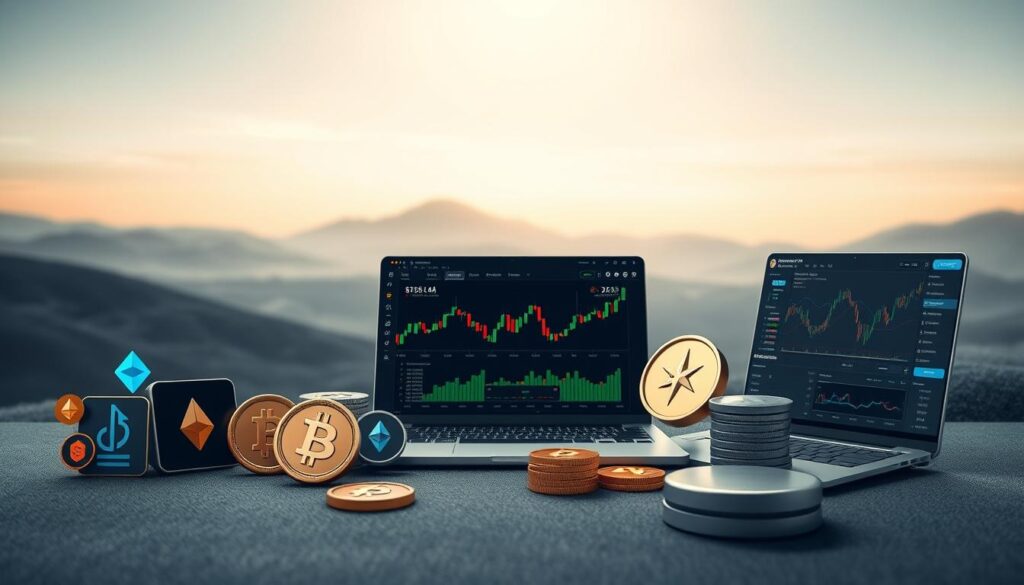
- Choose Your Platform: Look at top US crypto exchanges like Coinbase, Gemini, or Binance.US. Check their fees, what assets they support, and how secure they are.
- Create an Account: Go to the exchange’s website and click “Sign Up.” Enter your email and create a strong password. Turn on two-factor authentication right away.
- Verify Your Identity: Upload your government ID and a selfie. Some sites need proof of address. U.S. users must pass KYC checks.
- Link Banking Info
- Fund Your Account
- Explore & Trade
Connect a debit card or bank account using ACH. Remember, wire transfers take 3–5 days, but ACH can fund in 1–3 days.
Deposit at least $25–$100. Use the exchange’s suggested payment methods to avoid extra fees.
Explore the interface to buy crypto. Start small and try features like limit orders on advanced platforms like Kraken.
Be patient during verification. Delays can happen if documents are missing. Always check the exchange’s help center for detailed guides. Choose exchanges with strong security, like those in the top US crypto exchanges rankings, to keep your funds safe from scams.
Future of Cryptocurrency Trading in the United States: What to Watch For
U.S. crypto traders will see big changes soon. The SEC and CFTC are making new rules. These rules could change how leading exchanges for U.S. traders work, like what they can list and how they follow the law.
State laws, like New York’s BitLicense, will also play a big role. They might affect who can use platforms like Coinbase or Gemini.
New tech will help exchanges grow. They’re using new tools to make things faster and cheaper. They’re also making it easier for new people to start trading.
Big banks and brokers are now getting into crypto too. This might make current exchanges like Kraken or Binance.US offer more. They might add things like staking, margin trading, and DeFi options.
Traders need to keep up with the latest news. Watch for updates from the SEC, CFTC, and exchange blogs. This way, you can adjust your plans and pick the right platform for you.
FAQ
What are the top crypto exchanges for U.S. traders?
Top crypto exchanges for U.S. traders include Coinbase, Gemini, and Kraken. Binance.US and FTX.US are also popular. Each offers features like regulatory compliance and various trading options.
How do I choose the best cryptocurrency trading platform?
Look at security, regulatory compliance, and available cryptocurrencies. Also, consider fees and customer support. This helps ensure a safe and efficient trading experience.
What are the regulations affecting top US crypto exchanges?
U.S. crypto exchanges face strict regulations from the SEC and CFTC. State laws, like New York’s BitLicense, also apply. These rules affect what services exchanges can offer.
Are there specific security measures to look for in exchanges?
Look for cold storage, two-factor authentication, and insurance. Also, check if they share their security practices. This ensures your funds are safe.
What is the typical fee structure on top exchanges?
Fees vary across exchanges. They include maker and taker fees, deposit and withdrawal fees, and spread markups. Compare these fees to find the best deal.
Can I trade cryptocurrencies with margin on U.S. exchanges?
Yes, some U.S. exchanges like Kraken offer margin trading. But, it depends on your experience and state laws.
What are the common challenges U.S. traders face when selecting an exchange?
Traders face challenges like limited cryptocurrencies and varying fees. Regulatory compliance is also a big issue. Knowing these helps make better choices.
Is it necessary to verify my identity on U.S. exchanges?
Yes, most U.S. exchanges require identity verification. This includes submitting official ID and other documents to meet regulatory rules.
How can U.S. traders protect their cryptocurrencies after purchase?
Use personal wallets for self-custody and enable two-factor authentication. Strong passwords and monitoring account activity are also key. Be aware of phishing attempts.


